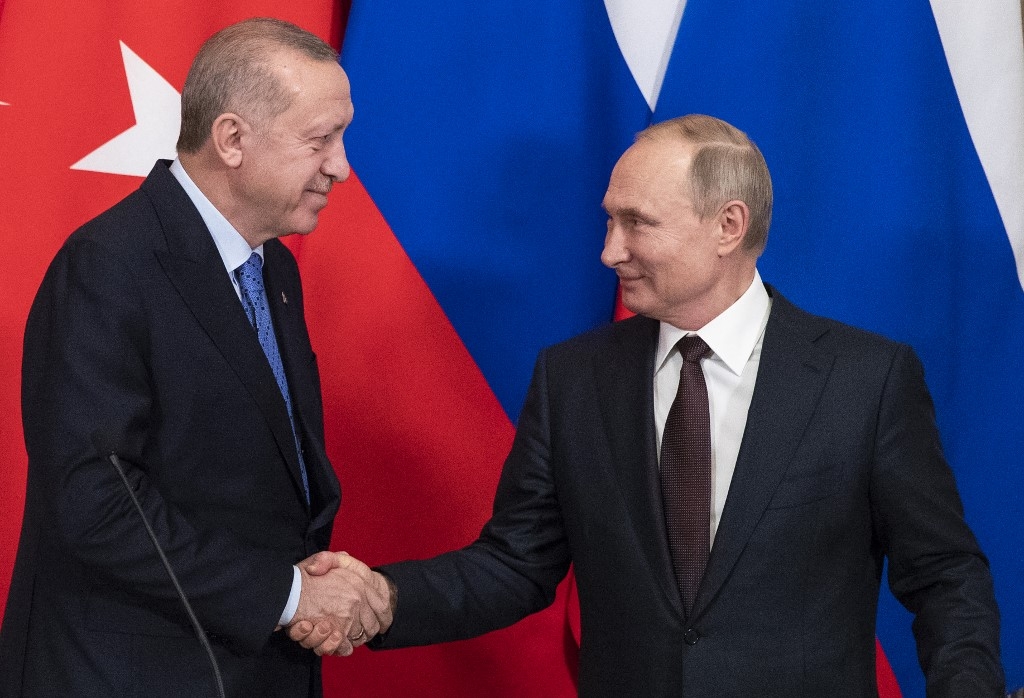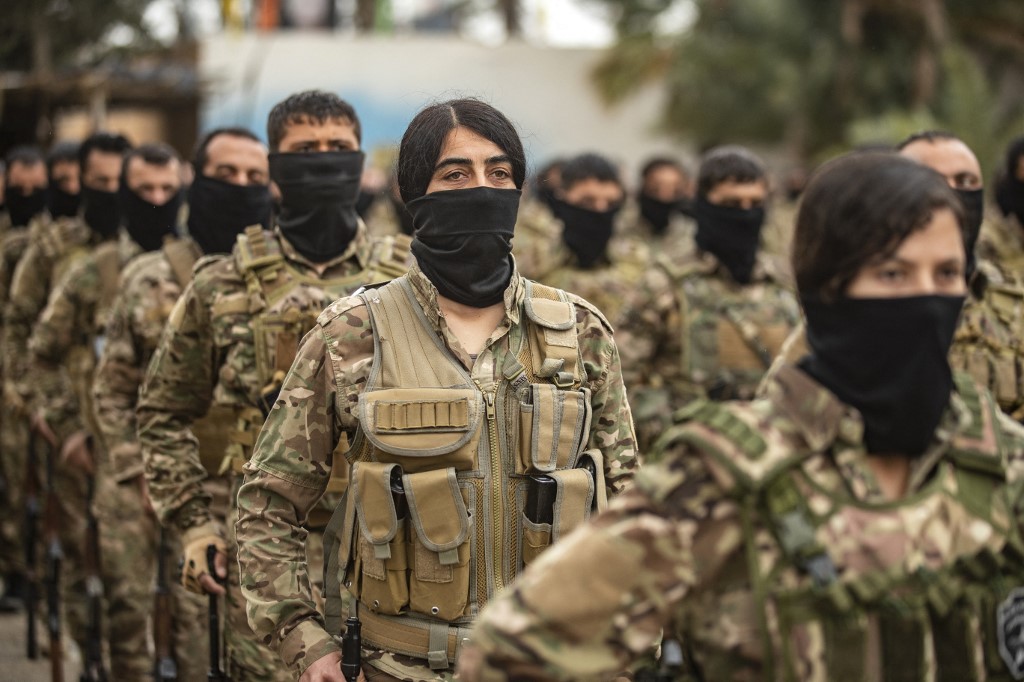Syria: Is withdrawal Biden's next move?

America’s withdrawal from Afghanistan has made its Kurdish allies in eastern Syria nervous. The White House was quick to reassure the Kurdish-led Syrian Democratic Forces (SDF) that it would not initiate a similar pull-out from Syria, but can US President Joe Biden be trusted?
After all, the Trump administration gave similar assurances before abruptly withdrawing over half its forces in 2019 and greenlighting a Turkish invasion.
More recently, Washington was muted when several SDF fighters were killed in Turkish attacks in August. Biden’s Kabul withdrawal, in which he prioritised saving “American lives” over his allies, will only heighten fears among the SDF that they too will be soon be abandoned.
Biden has never been much interested in Syria and, while he agreed to the anti-IS campaign, he opposed wider involvement in the conflict as vice president under Obama
So how likely is Biden to pull out? The signs are not good for the SDF. By withdrawing from Afghanistan, and also with the recent Aukus alliance, Biden has indicated clearly that great power competition, particularly the containment of China, is his primary foreign concern. This means ending involvement in the "forever war" legacies of the "war on terror" like Afghanistan and, possibly, Syria.
Related to this, Biden’s withdrawal suggests he has accelerated the move to fight Islamic terrorism "offshore". He seems to accept that Taliban rule may see Afghanistan become a haven for jihadists once more. Yet rather than tackling this with troops, he prefers to strike from distance - already the practice in Yemen, Pakistan and elsewhere.
New MEE newsletter: Jerusalem Dispatch
Sign up to get the latest insights and analysis on Israel-Palestine, alongside Turkey Unpacked and other MEE newsletters
Extending this approach to Syria, Biden might conclude he doesn’t need boots on the ground to prevent the resurgence of the Islamic State (IS) group.
Softer line with Assad
Biden has never been much interested in Syria and, while he agreed to the anti-IS campaign, he opposed wider involvement in the conflict when he was vice president under Barack Obama. There are already hints that he might take a softer line with Bashar al-Assad, recently exempting an Egypt-Jordan-Syria-Lebanon gas deal from the US's Caesar sanctions. Keeping US troops in eastern Syria to deprive Assad of oil may no longer be the strong motivator it once was.
Yet there are reasons for the SDF to be hopeful. Firstly, Biden was defiant on Afghanistan, but he will be wary of attracting more negative press by abandoning another ally so soon. This alone suggests that even were Biden keen to leave Syria, he may hold off until the post-Kabul criticism has died down.
Secondly, the operation in Syria is far less costly than the one in Afghanistan. While in 2018 the US still had 15,000 troops in Afghanistan, dropping to 4,000 before the withdrawal, it only has 900 supporting the SDF. Added to this, Syria is less of a live theatre now that IS’s caliphate has largely been destroyed, so American casualties remain low and Biden faces less domestic pressure to withdraw.
Then there is the international dimension. Key regional allies - especially Israel and Saudi Arabia - want the US to remain in eastern Syria to guard against Iran moving in. That said, another ally, Turkey, is eager for the US to leave so it can stamp down on the SDF unimpeded, believing its strongest faction, the PYD, to be Kurdish nationalist terrorists. Biden cannot please all of his allies, but there is certainly no regional consensus pressuring him to leave.
For the time being, then, even if Biden might prefer to get out, there is little internal or external impetus for a sudden withdrawal. However, that could change. In particular, the dynamics between Turkey and Russia in Syria are significant, and events in Afghanistan could yet have reverberations there.
Russian strategy
One of Russia’s long-term goals is to get eastern Syria back in Assad’s hands, which would give Damascus’s beleaguered economy access to oilfields it badly needs. But unlike rebel-held Idlib, which Assad and Moscow seem intent on capturing militarily, Russia’s strategy in the east seems to be persuasion. Ideally, it wants the SDF to accept a settlement with Assad and ask the Americans to leave.
This is not so far-fetched. The PYD had a good relationship with both Assad and Russia before Syria’s civil war and there is a faction that sees the SDF’s future under the protection of Damascus and Moscow rather than Washington. Indeed, when Trump permitted Turkey to invade in 2019, the SDF immediately looked to Moscow, which brokered a ceasefire in exchange for Russian and Assad troops gaining positions in SDF-held territory.
Turkey’s activities are also helping Russia to nudge the SDF into swapping sides. Ankara increasingly sees the PYD as its number one concern in Syria, with defeating Assad and defending the rebels slipping down the priority list. As it struggles to moderate the extremist Idlib rebels, and Russian air strikes frustrate Ankara there, the frontline with the SDF further east is one of the few areas of Turkish success.
Consequently, it has stepped up attacks on SDF positions, either with drones or using its proxy Syrian rebel allies. Every time it does, and Washington fails to respond, it adds more evidence to Moscow’s claim that only Russia can protect the SDF from Turkey. Ankara might actually be open to some kind of eventual Assad-SDF-Russia deal, as long as it means ultimately disarming or neutralising the PYD.
For Vladimir Putin, Biden has given him the gift of doubt to sow in the SDF leaders’ minds
Both Moscow and Ankara will feel that the US pull-out from Afghanistan has increased their chances of getting what they want.
For Turkey, it suggests a lack of interest and staying power that, at the least, might see Washington tolerate Ankara’s raids on SDF positions, and at best see the US cut and run.
For Vladimir Putin, Biden has given him the gift of doubt to sow in the SDF leaders’ minds. Even if the White House has no plans to immediately leave eastern Syria, and faces little pressure to do so, both Russia and Turkey will try to exploit the fallout from Afghanistan to further their goals, which might ultimately hasten an American departure anyway.
The views expressed in this article belong to the author and do not necessarily reflect the editorial policy of Middle East Eye.
This article is available in French on Middle East Eye French edition.
Middle East Eye delivers independent and unrivalled coverage and analysis of the Middle East, North Africa and beyond. To learn more about republishing this content and the associated fees, please fill out this form. More about MEE can be found here.







